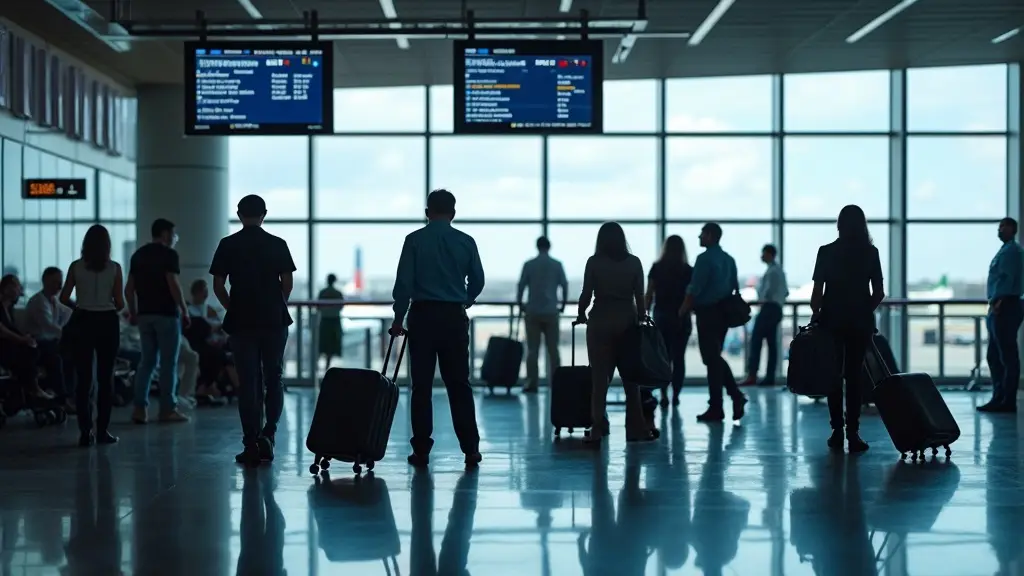Government Intervention Ends a Major Strike
In a dramatic turn of events, the Canadian government has intervened in the ongoing labour dispute between Air Canada and its flight attendants. Federal Jobs Minister Patty Hajdu has ordered the 10,000 striking flight attendants back to work and has referred the work stoppage to the Canada Industrial Relations Board. This intervention came less than 12 hours after workers walked off the job, an action that had grounded hundreds of flights and stranded more than 100,000 travellers around the world during the peak summer travel season.
Hajdu cited the need to avoid risks to the economy and noted the unprecedented tariffs the U.S. has imposed on Canada as key reasons for the government’s decision. The intervention effectively ends the strike, and the two sides will now move to arbitration, where a third-party mediator will decide the terms of a new contract.
The Resumption of Flights and Ongoing Cancellations
Following the government’s order, Air Canada has announced that it plans to resume flights on Sunday evening. However, the airline warned that it will take several days before its operations return to normal. The airline has said that some flights will be cancelled over the next seven to 10 days as it works to stabilise its schedule.
This will undoubtedly cause continued disruption for travellers, but the airline is offering passengers whose flights are impacted the option to request a full refund on its website or mobile app. It is also offering alternative travel options through other Canadian and foreign airlines when possible, but it has warned that it cannot guarantee immediate rebooking because many flights are already full due to the summer travel peak.
The Sticking Points in a Bitter Contract Fight
The contract fight between Air Canada and the Canadian Union of Public Employees (CUPE) has been ongoing for about eight months. The two sides have said they remain far apart on a number of key issues. The central point of contention is pay and the unpaid work that flight attendants do when planes aren’t in the air. The union has pushed back on the airline’s latest offer, which included a 38% increase in total compensation over four years, arguing that the proposed 8% raise in the first year didn’t go far enough to address the effects of inflation.
The airline, for its part, has maintained that its offer would have made its flight attendants the best-compensated in Canada. The bitter contract fight highlights the ongoing tension between a company’s need to control costs and its employees’ need for fair compensation in a challenging economic climate.
Read More: SHEIN’s UK Sales Surge as Hong Kong IPO Plans Advance
The Impact on Travellers and the Broader Economy
The strike’s impact on travellers was immediate and severe. The shutdown of Canada’s largest airline stranded an estimated 130,000 people a day, grounding around 700 flights. This created a massive amount of disruption during the peak summer travel season, a time when many people rely on the airline for their vacations and business trips.
The strike also had a broader impact on the Canadian economy. Hajdu’s decision to intervene was a direct response to the economic risks that the strike posed, particularly in light of the new US tariffs on Canada. The strike’s impact on the airline industry and the broader economy highlights the crucial role that a major airline plays in a country’s economic health and its ability to connect with the rest of the world.
The Government’s Role in Labour Disputes
The Canadian government’s intervention in the Air Canada strike is not an isolated event. Last year, the government forced the country’s two major railways into arbitration during a work stoppage. This has led to a debate about the government’s role in labour disputes. The union for the rail workers is suing, arguing that the government is removing a union’s leverage in negotiations.
The Business Council of Canada had urged the government to impose binding arbitration in this case, and the Canadian Chamber of Commerce welcomed the intervention. Hajdu, for her part, maintained that her government is not anti-union, but that it was clear the two sides were at an impasse. The intervention raises questions about the balance between a union’s right to strike and the government’s responsibility to protect the economy and the public interest.
Air Canada Dispute Moves to Arbitration
With the flight attendants now back at work, the two sides will move to arbitration. The Canada Industrial Relations Board has extended the term of the existing collective agreement until a new one is determined by the arbitrator. This process will involve a third-party mediator who will review the arguments from both sides and make a final decision on the terms of a new contract.
This is a common practice in labour disputes, and it is a way to resolve a disagreement when two sides are at an impasse. The outcome of the arbitration will have a lasting impact on the flight attendants, the airline, and the broader Canadian labour market. The decision will set a new precedent for how similar disputes are handled in the future.
Government Intervention and the Airline Industry
The Air Canada strike and the government’s intervention have broader implications for the airline industry. The dispute highlights the ongoing challenges that airlines face in a competitive and highly regulated market. The need to control costs while also providing fair compensation to employees is a delicate balance that many airlines struggle to maintain.
The government’s willingness to intervene in a labour dispute also sends a signal to the industry that it will not tolerate a work stoppage that has a major impact on the economy and the public. This could lead to a new era of labour relations, where airlines and unions are more likely to seek government-directed arbitration as a way to resolve their disputes.























